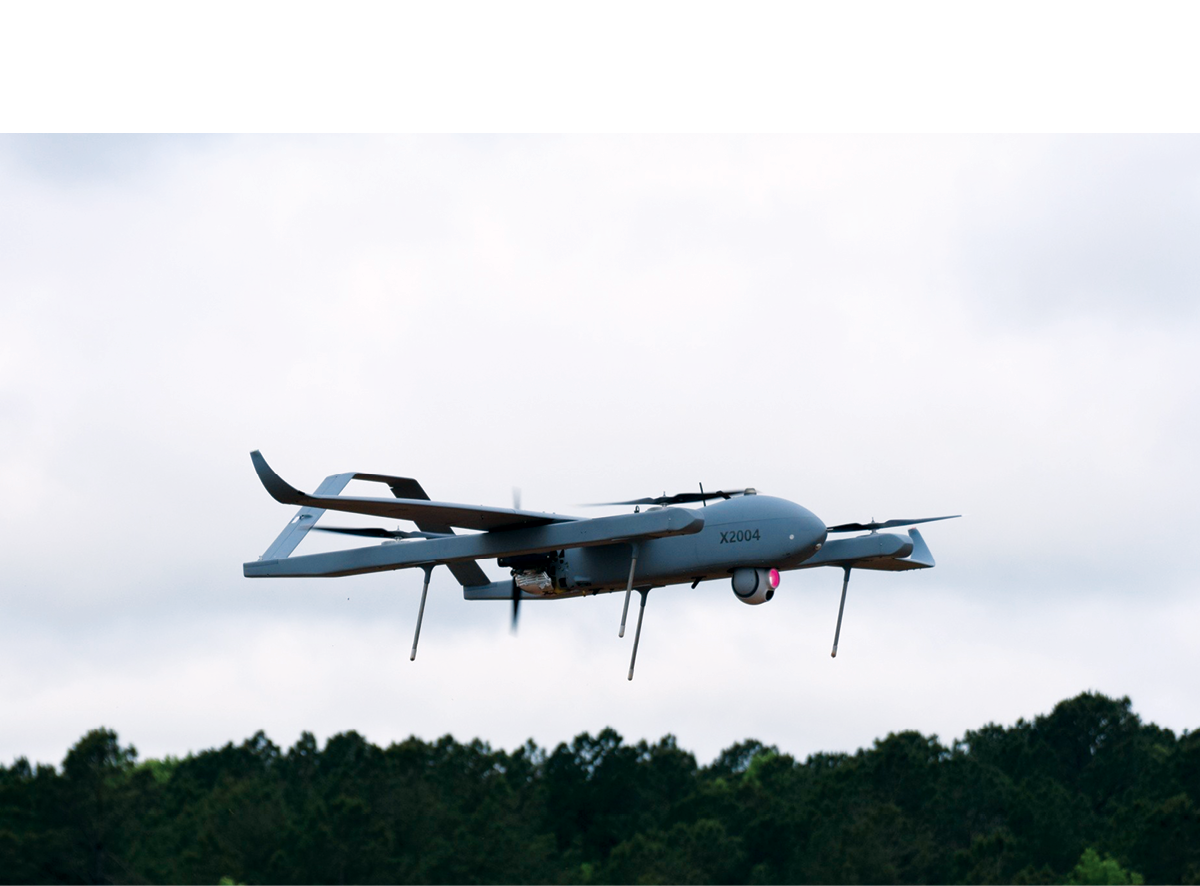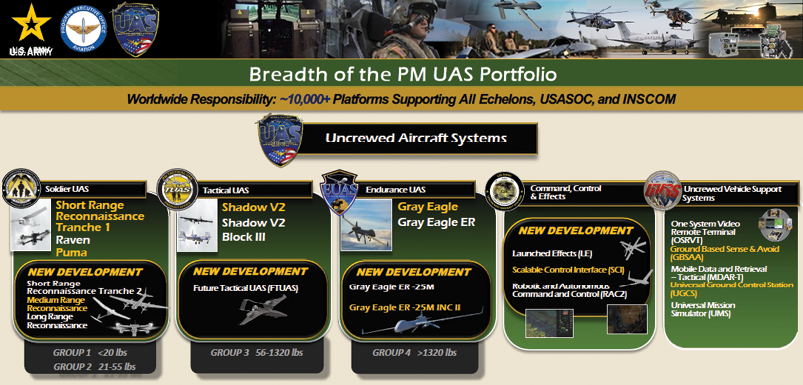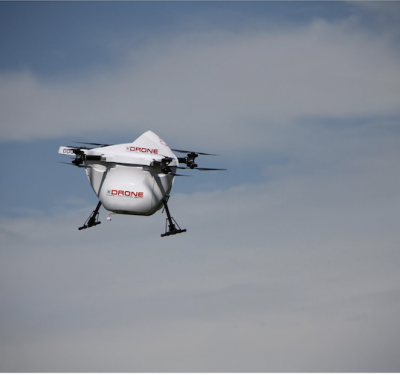
The U.S. Army is leaning heavily into small UAS, including the forthcoming FTUAS and new Launched Effects, and is changing its concepts of operations for them.
The U.S. Army is leaning heavily into small unmanned aircraft and wants them to be available to Soldiers at all levels, with modular hardware and software interfaces and usable by common controllers. And it wants them in the field, fast.
“We’re here to revolutionize the battlefield through UAS,” Col. Danielle Medaglia, the Army’s project manager for uncrewed aircraft systems, said at the AUVSI Pathfinder chapter’s recent annual symposium in Huntsville, Alabama, home to Redstone Arsenal.
Quoting Gen James Rainey, Commander of Army Futures Command, Medaglia said, “we will not sacrifice first blood for first contact anymore. What we’re doing here, collectively, is important. We’re saving lives.”
The Army isn’t alone in feeling the urgency for unmanned systems, she said. “In the past 18 months, every [military] branch is getting after UAS with all they have,” Medaglia said.
Similarly, she said “FMS sales [foreign military sales] are exploding in UAS. It’s like nothing we’ve ever seen before. Quite frankly, with the events going on in Ukraine, over a year now, wow, countries are coming out of the woodwork saying I want to be in step with what the United States is doing. And we want to buy what you’re going after.”
The Army has several program deadlines looming. One is for the Future Tactical UAS, or FTUAS, which is under competition with only two companies still in play—Textron Systems and Griffon Aerospace—down from four competitors, which included the team of Northrop Grumman and Shield AI and Sierra Nevada Corp.
Medaglia said the Army wants the system badly. The first units are scheduled to be equipped with FTUAS in 2026.
“When I tell you the Army wants the FTUAS today, it is loud,” Medaglia said. “We want it, we want it today. We are tired of being hamstrung to an airfield, a runway. This vertical takeoff and landing ability of FTUAS is a game changer for our BCTs [Brigade Combat Teams]. God forbid, a coming war, we’re not doing FOBs [forward operating bases]. You stay in one place, you die. FTUAS is a brigade-level asset…they can do it from wherever they want, they don’t have to be next to a runway.”
LAUNCHED EFFECTS, JTAARS
In January, the Army plans to release a request for information to industry for short-range Launched Effects (LE), the new name for what were formerly Air-Launched Effects, reflecting the reality that these small UAS can be launched from air, ground or sea.
Related to that, Dennis Teefy, the program manager for sensors and aerial intelligence for IEWS, said industry should “expect a flurry of sensor RFIs [requests for information], about all different kinds of payloads” for the short-range LEs. “Launch effects are just a truck,” Medaglia said. “It can do anything, depending on the payload we have on it. For example, extended EO/IR is a big deal. Our Soldiers want EO/IR on the launch effects because they’re primary.” Or, the systems could carry kinetic weapons.
The mid-range LE program will be moving into the prototype phase, the short range will have its RFI coming up and the longer-range variant will come online in 2027 or 2028, Medaglia said. LEs are becoming “less attritable” as their payloads get more sophisticated and expensive, said Lt. Col. Nick Ryan, director of aviation platforms/Army Capability Manager-UAS.
“If it has some kind of payload other than a munition on it, we’re going to want it back at some point,” Ryan said. LEs should also be more repairable by soldiers in the field, he said.
The Army is also continuing work on a program to use drones to resupply Soldiers and Marines when other methods aren’t available.
“I think a lot of us have heard the stories where the Soldiers had to leave their FOB to go about three clicks to go get batteries. It didn’t work out super awesome,” Medaglia said. “Why in the world do we have to send Soldiers out of a FOB a very short distance to go get batteries? Well, we’re not going to do that anymore. We’re going to send a robot…ground, air, it doesn’t matter.”
In September, the program—JTAARS, for Joint Tactical Autonomous Aerial Resupply System—will go before a “shaping panel” to see whether it can proceed, Medaglia said.

UKRAINE INFLUENCE
Russia’s invasion of Ukraine, and Ukraine’s furious response to it, have opened the eyes of militaries around the world to the role small UAS can play in warfare, an Army requirements chief said. That includes the U.S. Army, which is looking for ways to do sUAS warfare better.
“The first thing I do in the morning, I wake up, roll out of bed, have my coffee and I’m on the Telegram app looking at open-source intelligence of what’s going on in drone, drone warfare, both from the Russian and the Ukrainian side, as well as non-state actors around the world,” said Lt. Col. Michael Brabner, the Air Branch Chief in the Maneuver Capability Development Integration Directorates Robotics Requirement Division.
His team is writing requirements for seven sUAS programs under the Joint Small UAS architecture, including the short-, medium- and long-range reconnaissance systems, tethered UAS and first-person view systems.
“We’re trying to look to not only change doctrine, how we’re going to fight in the future, just kind of emulating what we’re absorbing watching Ukraine and Russia right now,” he said.
Reports have indicated Ukraine having three out of five drones shot down, losing up to 10,000 of them a day. “Those are commercial, off-the-shelf DJI drones, they’re not connected to a mesh network, they’re not connected to ATAK [the Army’s Tactical Assault Kit], they’re not utilizing our tactics, our doctrine, so we can do it better,” he said.
Deputy Defense Secretary Kathleen Hicks on Aug. 28 unveiled a program named Replicator, intended to field thousands of autonomous, disposable systems across multiple domains. Although the program is aimed at countering China, Hicks referenced the role cheap drones have played in the war in Ukraine, according to press reports.
“We’re very happy to see everything we’re doing that senior leadership are starting to wake up to,” Brabner said, referencing the Replicator program. “If you’re reading that article [about the Hicks announcement], you’re kind of seeing the dollar bills that are starting to get thrown behind small UAS.”
He said he previously described the small UAS portfolio within PEO Aviation as “the black sheep. Well, now they’re starting to say, hey, I can utilize robotics to not only make contact, maintain contact, and then flip that paradigm. We all remember IED alleys and how we were subject to a time and place of the enemy’s choosing. Now, with robotic-enabled maneuver, and small UAS, we can kind of flip that paradigm on our enemies, and then go back to actually owning the night.”
Most of the videos coming out of Ukraine and Russia are shot in the daytime, he noted. “Given an advanced EO/IR [electro-optical/infrared] sensor on that thing, and now we really own the night. So now we have a sensor with NVG [night vision goggle] thermal capabilities going out there doing our hunting for us.”
In some cases, that is literal. “We go out with our drones and we hunt hogs and then we maneuver on them with thermals and NVGs and automatic rifles. We put it into practice at Fort Benning,” Brabner said of the base that has now been renamed Fort Moore. “We’re playing with it in real time and it’s a significant emotional event for those animals…they’re an invasive species, by the way, so any animal lovers out there, we’re doing God’s work.”

DOCTRINE SHIFT
The U.S. isn’t the only country paying close attention to the use of small drones. Brabner said Russia has changed the way it uses some of the sUAS.
“I sat in a brief yesterday and it was going over how Russia just changed their doctrine. How easy is it to change doctrine? Kind of a tectonic, glacial process, right? So, everybody remembers the Russian doctrinal TTP [tactics, techniques and procedures] of, blanket everything with artillery, 200-plus rounds. Just get a general grid location and fire for effect. They’ve pulled reconnaissance out of their maneuver elements. Guess where they put it? In their artillery battalions…so, now you have artillery reconnaissance with small UAS,” he said. “Going out there to find that target so you can get those coordinates and then fix them, and you’re going from shooting 200-plus rounds to shooting 30 rounds.”
Harkening back to what Hicks said about Replicator and its usefulness against China, Brabner said China has more small UAS than the United States, and getting more sUAS to the field is crucial.
“What’s the preponderance of systems on the battlefield right now in Russia and Ukraine? The number one killer of main battle tanks: Artillery. The number two killer of main battle tanks: mines. The number three killer of main battle tanks and other military vehicles is loitering munitions and small UAS,” he said.
MORE AIRCRAFT
The U.S. Army is now operating more aircraft than the U.S. Air Force, including its unmanned aircraft, and “our tactical-level users are screaming for more,” Ryan said.
Unmanned systems and Launched Effects are in the top 10 service priorities, he said, but some legacy systems are important as well.
The Army will continue to improve the small Shadow and the much larger Gray Eagle UAS. Both may eventually be replaced by vertical takeoff and landing platforms, but “there is not currently a requirement for something to replace the Gray Eagle,” Ryan said, and as for the venerable Shadow, “the platform is going to stick around a while, too.”
Lt. Col. Jeff Bess of PM UAS reiterated the Shadow will remain with the Combat Aviation Brigades, even as the FTUAS replaces it for Special Forces and BCTs. The Shadow recently began its block 3 upgrade, which includes a more powerful, quieter engine.
“Shadow is going to be around for a while, so we need to take care of it,” he said.
However, the Army wants to move away from large ground control stations. Ryan said, “We are getting away from the ground control stations. We do not want these giant boxes that have to be carried on the back of an LMTV [light medium tactical vehicle], can barely fit in a C-130, can’t be lifted with a Chinook, we don’t want that anymore,” in favor of systems such as the Scalable Control Interface (SCI) and the RAC-2 (Robotics and Autonomous Command and Control)—smaller, distributed software systems that can control a variety of UAS.
MOSA
The U.S. Army knows where it wants to be in a decade with its mixed of crewed, unmanned and autonomous systems, but the biggest obstacle to getting there is the budget, said Forrest Collier, the new chief of staff for Program Executive Office (PEO) Aviation.
“Budget is going to be the biggest obstacle to achieving our desired end state,” Collier said. “That is why we are investing so heavily in things like MOSA.”
MOSA stands for modular open-system approach. The National Defense Authorization Act of 2021 mandated that all defense programs, regardless of their size, must consider MOSA objectives in program planning.
The Army’s PEO Aviation, based at Redstone Arsenal, says this means all acquisition programs must use a modular design and system architecture for platform-specific hardware and software interfaces, so components can be incrementally added, removed or replaced. In addition, programs must aim for the maximum reuse of common hardware and software modules, tools and support equipment.
“We see it as the critical capability for the modernization of our fleet,” Collier said.
In the FTUAS competition, for example, MOSA considerations ranked high.
“In the first agreement option period, the UAS PMO evaluated PAH [Project Agreement Holders] submissions against requirements of performance, Modular Open Systems Approach [MOSA], cost, schedule, risk, and key Program Executive Office, Aviation and Army priorities,” the Army said in its September announcement of the two remaining competitors. “The period culminated in a Preliminary Design Review allowing the UAS PMO to assess the weapon system designs presented by all PAHs.
“Following the CDR, the remaining PAHs will participate in flight demonstrations and MOSA third-party verification in the third agreement option period before delivering production representative weapon systems and support equipment for developmental testing and operational demonstrations with soldier touch points in a subsequent agreement option period.”
Medaglia said her shop is fully committed to MOSA, SCI and the RAC-2. Soldiers will be able to operate Group 1 and 2 UAS with RAC-2 and larger Group 2-4 vehicles, including the Gray Eagle, with SCI.
Soldiers can request permission to control a UAS and quickly get the data they need, without even knowing if they are using SCI or RAC-2, as they will be transparent and somewhat interchangeable.
“I don’t need to call a UAS commander anymore, especially if you’re in the middle of a mission, a Soldier on the ground. You can ask permission and boom, you’ve got it, you’ve got the data. That’s fast,” Medaglia said. “The speed of what we’re working here is something we’ve never seen before.”






